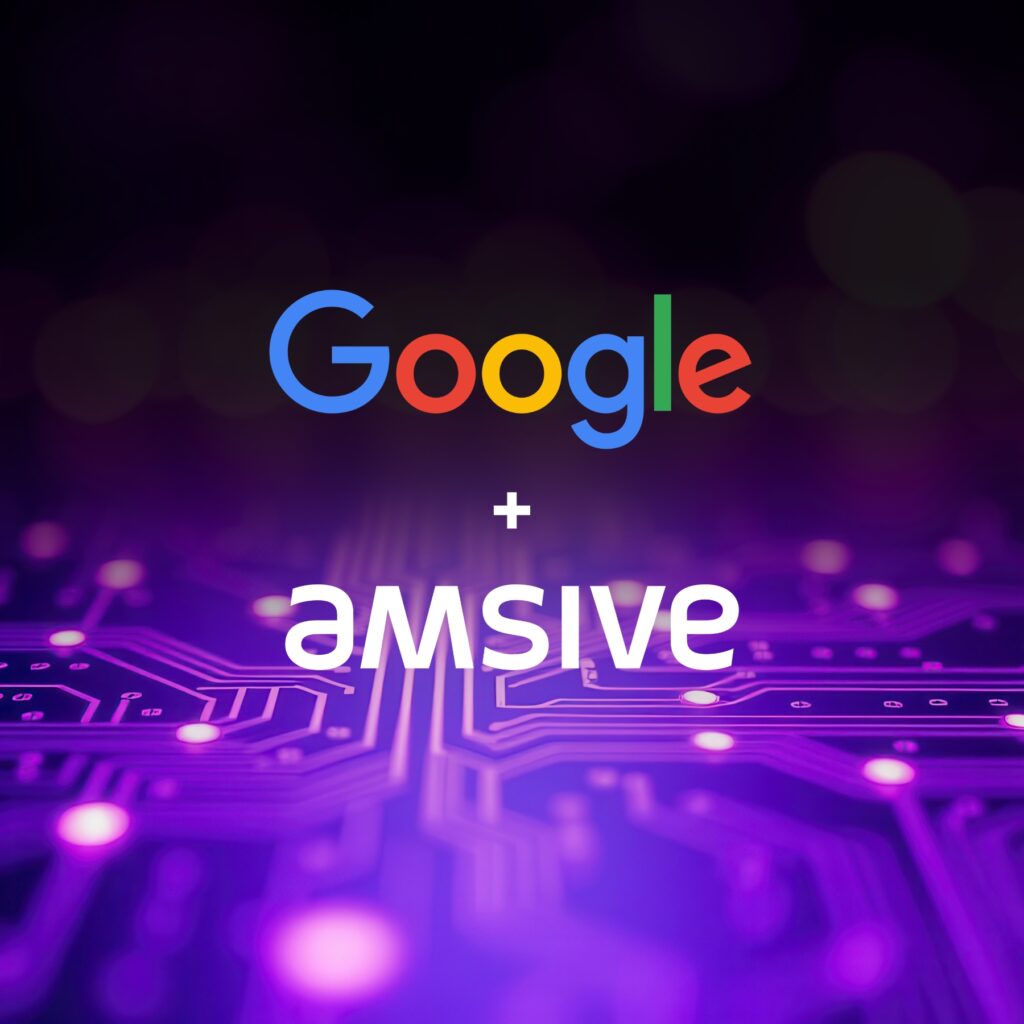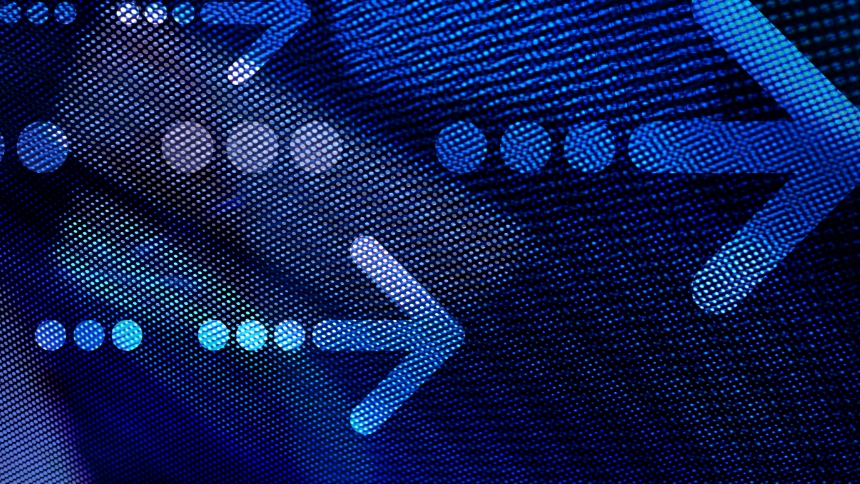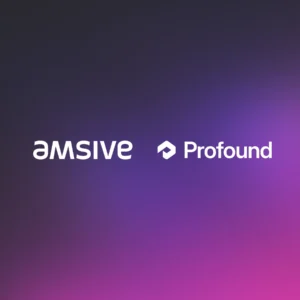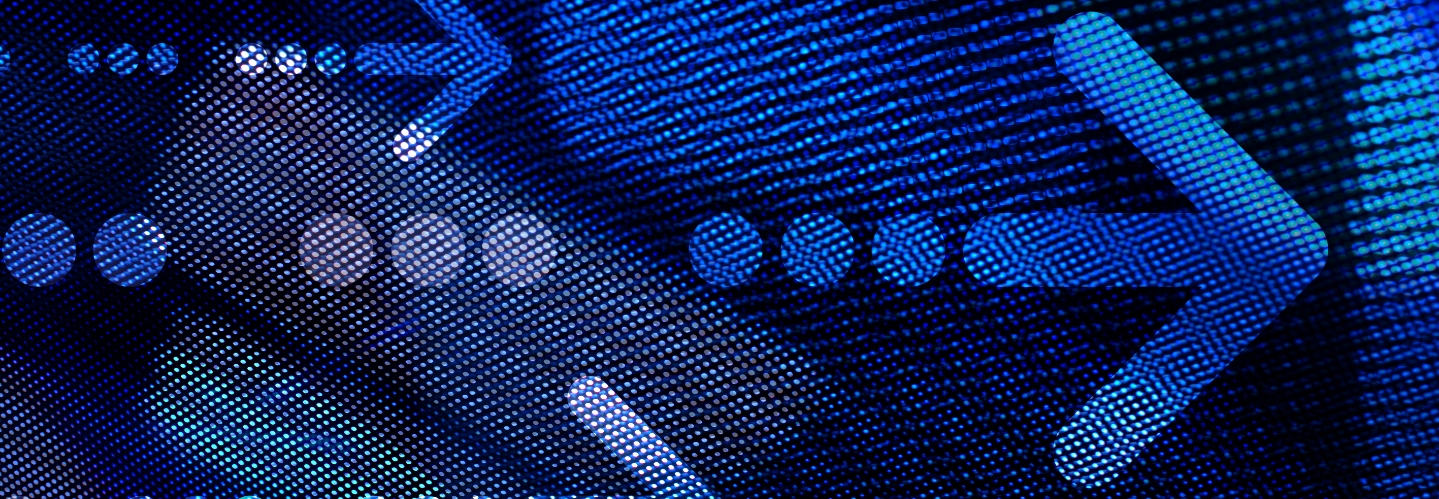Over a third of CMOs are already using Generative AI (GenAI) to create stand-out brand experiences. GenAI, a subset of AI, can create original content, from text to images and beyond, at scale.
However, creative leaders, the keepers of brand and builders of customer experiences, have legitimate questions about its use. Agencies and brands are facing concerns of security and ownability head-on as this new era unfolds.
What’s the right balance between human ingenuity and AI? How can newly established processes adapt in tandem as technology changes? Where should teams start implementing this tool?
Testing various platforms and balancing this new technology with factors such as security, quality, and efficiency ensures your business can determine how best to use (or not use) AI to achieve creative needs without incurring unnecessary risk.
Here’s a common use case: campaign ad creative. Let’s examine how AI can inform and improve this foundational area within every marketing strategy. Learn a framework of do’s and don’ts to adapt alongside technology, improving efficiency within this era of exploding innovation.
Jump To:
A Working Framework for AI + Campaign Creative
This framework is designed to guide marketing professionals in harnessing the power of AI while maintaining the integrity and effectiveness of their creative concepts and campaigns. Distilled from our experts’ insights and experience, following this guidance ensures your use of AI in campaign creative is both strategic and impactful.
This framework can empower marketers to make informed decisions, optimize creative output, and ultimately drive superior campaign performance.
| Dos for Using AI in Campaign Creative | Don’ts for Using AI in Campaign Creative |
|---|---|
| Enhance Efficiency: Streamline workflows and automate routine tasks with AI, enhancing productivity. | Avoid Overreliance: Ensure a balanced approach where AI supports human judgment and creativity as an additional tool, not replacing it. |
| Add Additional Insight for Creative Decisions: Use AI to analyze prospect, audience, and market data to inform creative decision-making. | Be Cautious with Data: Handle all data responsibly, adhering to privacy and ethical standards. |
| Use Ethically & Responsibly: Follow best practices for ethical AI use, including data security and avoiding biases. | Continuously Monitor and Adjust: Regularly evaluate and adjust AI outputs for accuracy and relevance. |
Creative teams can gain more bandwidth for concepts and critical thinking by following a strategic and ethical framework. What tasks can AI assist businesses with today when building campaign creative? Here’s some from our creative team.
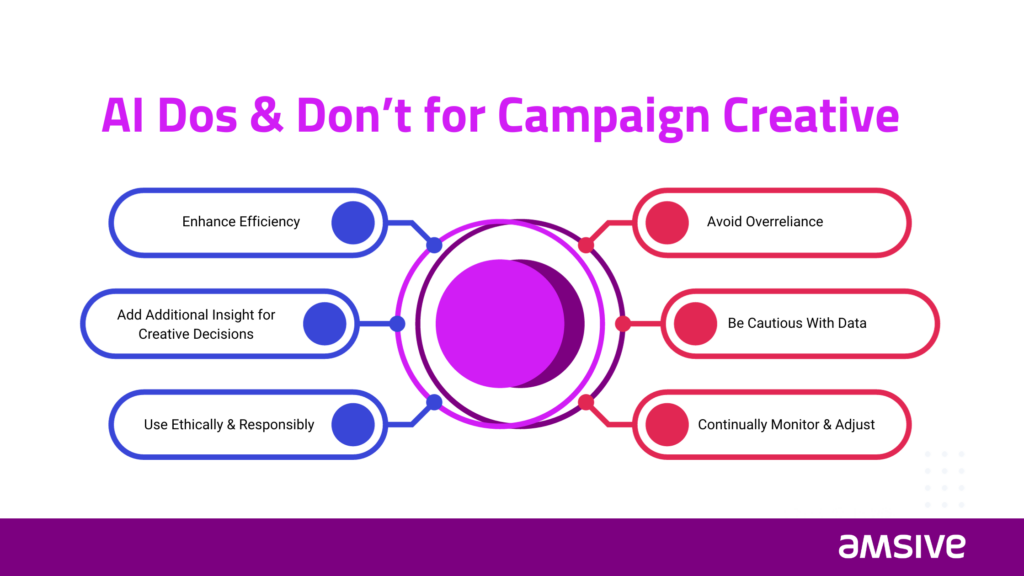
4 AI Uses to Check Off Your Creative Task List
1. Revolutionize Image Retouching with AI
Use Adobe Creative Cloud products to retouch faster than ever before. From image extensions such as generative fill to easier silos and moving elements, these tools allow our team to produce high-quality imagery in a fraction of the time. As this technology continues to advance, imagery and video can be manipulated more easily to create the perfect, personalized campaign creative.
2. Create 3D Visuals from Flat Images
Our team uses AI technology to convert simple, flat images into intricate 3D visuals. This capability isn’t just about adding dimension but crafting immersive user experiences with lifelike product renderings and virtual environments. This innovative approach overcomes physical photo shoots’ logistical and financial hurdles, offering more creative freedom and cost-effective, innovative visual solutions. For example, a 2D wine bottle comes to life and rotates, allowing consumers to see the details of the front and back labels.
3. Enhance Imagery Resolution with AI
Sometimes, the required campaign imagery isn’t crisp or high-quality. You can utilize AI to be able to enhance resolution for almost all imagery. Enhancing image resolution, texture, and sharpness can transform even lower-resolution images into high-quality assets. This advancement ensures visual consistency across platforms and allows for a broader range of visual content, thus elevating the overall aesthetic appeal of your campaigns.
4. Dive into Hyper-Personalization
Stay organized and optimized by using AI tools to drive your campaign creative testing and enhance personalization. Analyze consumer trends and first-party customer data with AI assistance to further enhance personalization for campaign creative, developing stronger brand-consumer connections. As hyper-personalization takes hold, AI tools can assist in continuously refining and optimizing campaign creative, ensuring maximum engagement and amplified results.
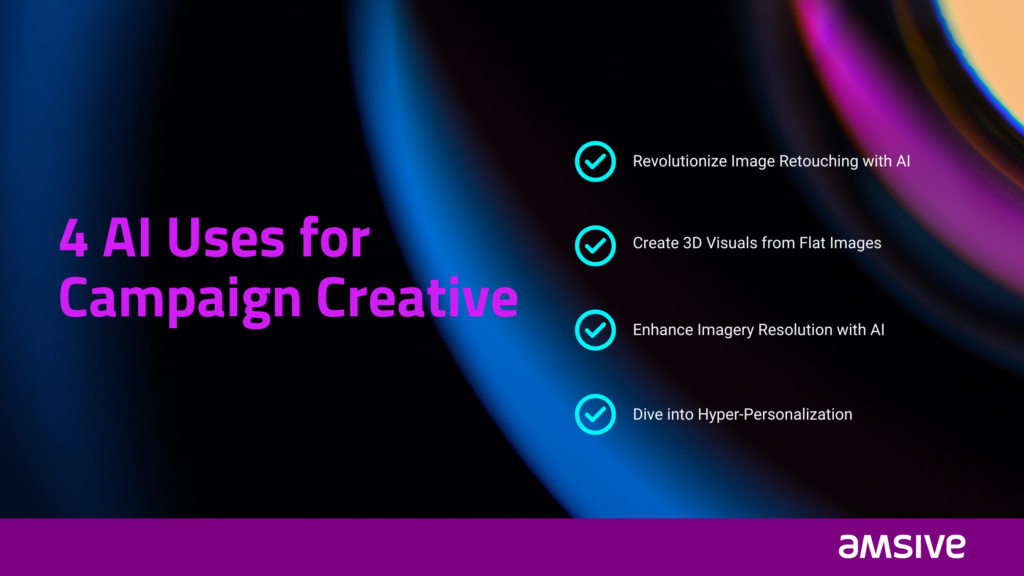
Streamlining Campaign Creative with AI Integration
2024 is set to be a year for marketers like no other. Amidst all of this evolution, what are your current creative processes, and where best can AI tools support your goals?
When enhancing campaign creative with AI support, start by evaluating your current creative processes. Identify which aspects of your campaign’s creative development are repetitive or data-heavy and could benefit from AI tool assistance.
Consider the effectiveness and efficiency gains AI could bring to these identified areas. It’s crucial to balance the potential time savings against the current quality of output AI can provide, as well as ethical and privacy best practices. Once you’ve identified the tasks suitable for AI, research and select the appropriate AI tools that specialize in creative tasks, such as AI-driven design platforms or automated copywriting tools.
However, remember the irreplaceable value of human creativity and judgment. AI, even GenAI, cannot always capture the nuance and emotional depth required for compelling campaign creative. A hybrid approach that blends the best of human creativity and instinct with AI support ultimately elevates and streamlines the final output.
Consistently monitor the results of your newly adapted processes. If they prove successful, integrate them more fully into your creative team’s workflow, allowing your team to devote more time to strategic and innovative aspects of campaign development.
Lastly, establish specific metrics to measure the impact of AI on your campaign creative. These could include time saved, increased output, or improvements in engagement metrics. Tracking these KPIs will help you gauge the effectiveness of AI in your creative process and guide future decisions on technology integration.
Integrating AI Into Your Creative Processes
As you embark on incorporating AI into your marketing efforts, it’s vital to methodically review your upcoming projects and current processes. Assess your existing marketing tactics and strategies for their performance and efficiency. This evaluation will guide you in understanding where AI can be most beneficial.
To remain relevant in advertising, marketers must stay ahead of trends, news, art, culture and technology. Even though I would have rather had an AI-powered cleaning robot before Generative AI, I see it as just another tool in our ever-changing arsenal.
Alice Jankowski, Creative Director
Identify the processes within your campaigns that are repetitive, data-intensive, and suitable for AI automation. Consider the potential benefits of automation against the effort required and its impact on work quality. Once you’ve pinpointed these processes, the next step is to find the most suitable AI tool for each task. Research online for tools that align with your specific needs.
However, it’s important to recognize the areas where human intervention is essential. Despite AI’s capabilities, it may not always produce optimal results, particularly in creative tasks. Human skills are irreplaceable in proofreading, editing, fact-checking, rewriting, and strategic decision-making.
After selecting the appropriate AI tools, implement and test them in your operations. Monitor their performance to ensure they meet your requirements. Let AI handle the tasks it excels at, freeing up your team to focus on more strategic and creative aspects of your campaigns.
Lastly, measuring the impact of AI integration is crucial. Establish AI-based Key Performance Indicators (KPIs) to track the efficiency and return on investment that AI brings to your projects. This step is vital to understanding the real value AI adds to your business, helping inform future technology strategies and investments.
The Future of AI-Supported Marketing Creative
As we look towards the future, the role of both AI and GenAI in campaign ad creatives is set to evolve significantly, marking a transformative era in marketing and advertising. Integrating these technologies will bring about unprecedented personalization, enabling brands to create ad content that resonates more deeply with individual preferences and behaviors.
This leap in personalization is expected to drive higher engagement and conversion rates as ads become more tailored to each consumer’s unique contexts and interests. Audience-led strategy is the best way to adapt ahead of these changes.
In the realm of immersive experiences, the synergy of AI with virtual and augmented reality technologies will open new avenues for interactive advertising. Brands will be able to craft more engaging and immersive virtual worlds, offering consumers novel ways to interact with products and services. This immersion will enhance user experience and create authentic, riveting brand interactions.
Collaboration tools enhanced by AI will also become more prevalent, facilitating a seamless blend of AI capabilities with human creativity. These tools will offer real-time suggestions, edits, and enhancements, empowering creative teams to leverage the strengths of AI while retaining the irreplaceable value of human insight and imagination.
Moreover, AI will facilitate the exploration of new markets and demographics, enabling brands to understand and adapt to diverse cultural nuances and preferences efficiently. This adaptability will be crucial in creating localized and relevant ad content for different regions. Transparent data usage and consent-driven marketing practices will become even more pivotal, maintaining consumer trust and compliance with evolving regulations.
The future of AI in advertising will see the emergence of more interactive and dynamic ad formats for creative campaigns. These ads will not only capture attention but also have the ability to adapt in real time based on user interaction, offering a more personalized and engaging experience. This evolution promises to redefine the advertising landscape, making it more responsive, effective, and attuned to consumers’ needs and preferences.
How can creatives and marketers prepare today? Combine audience-led strategy with a measured, thoughtful approach to AI adoption. Balancing the use of innovative tools with expert marketing prowess can ensure you remain one step ahead of your competitors within a rapidly evolving marketplace.
As competition increases, learn how to cut through the noise with your CTV campaigns, or let’s talk about achieving more for your marketing — and your business.
